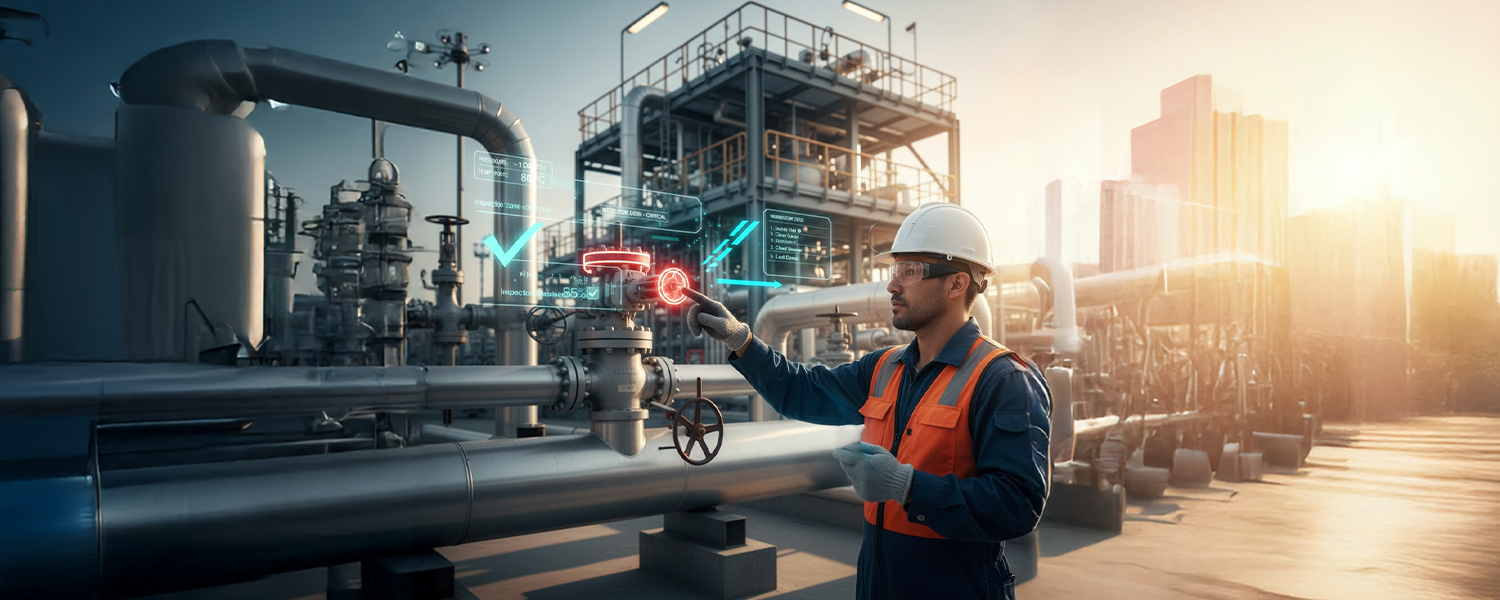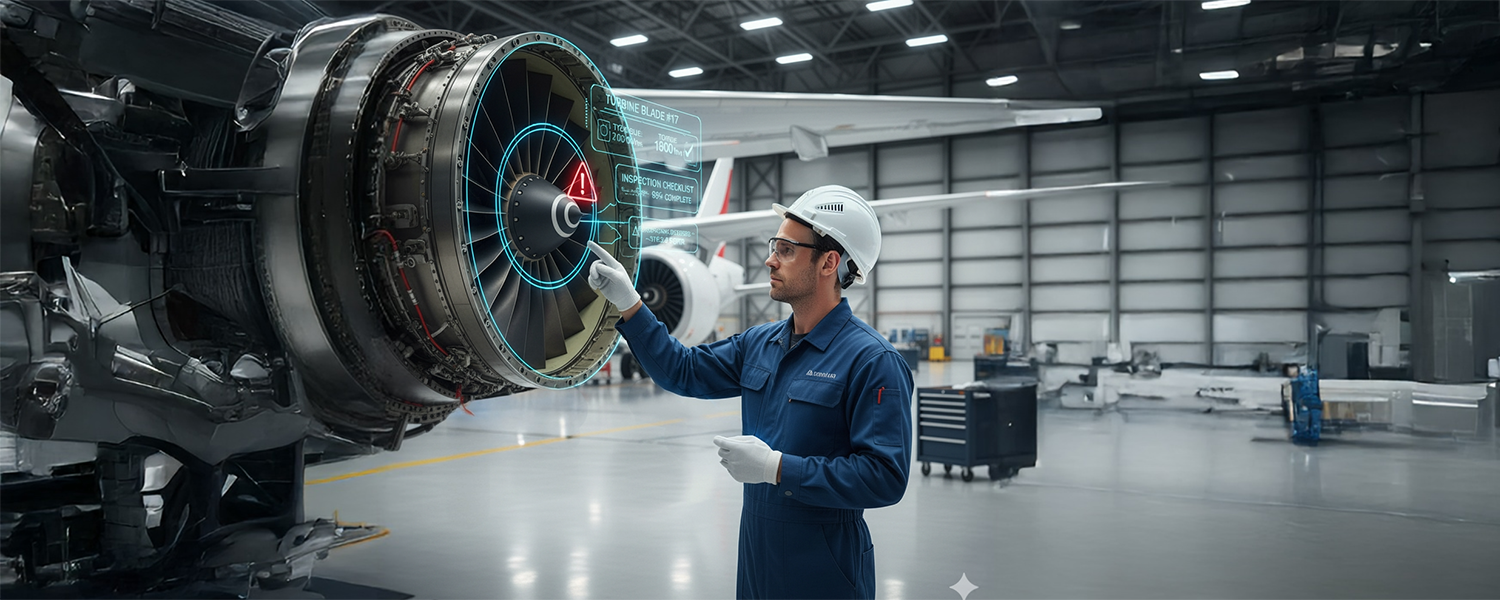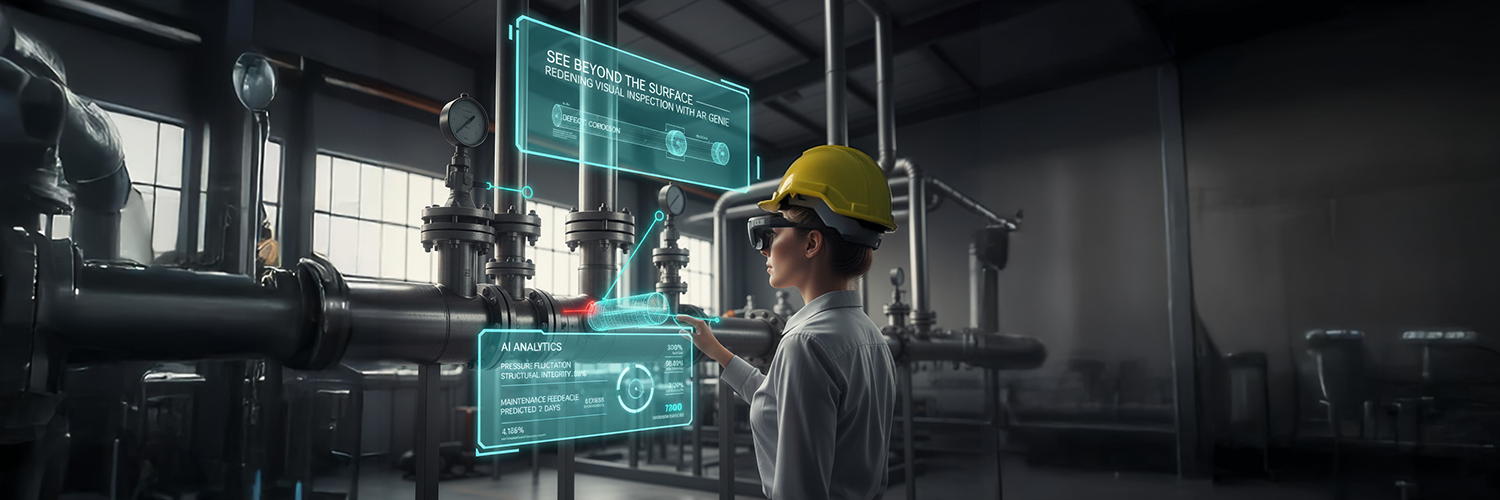
In industries where precision, safety, and reliability are non-negotiable, visual inspection plays a critical role. From manufacturing and oil & gas to aerospace, automotive, and energy sectors — visual inspection ensures that assets, equipment, and components meet quality and safety standards before they impact operations or end-users.
Yet, despite being one of the oldest quality control practices, visual inspection is evolving rapidly with advancements in Augmented Reality (AR), Artificial Intelligence (AI), and Computer Vision. What was once a manual, error-prone process has now become a smart, data-driven, and predictive operation — enabling enterprises to “see beyond the surface.”
In this article, we’ll explore why visual inspection is so important, its far-reaching impact, and how AR Genie is redefining it for Industry 5.0.
At its core, visual inspection ensures product integrity and operational safety. It’s the frontline defense against defects, wear, corrosion, leaks, and anomalies that could compromise performance or endanger lives.
A small crack in a turbine blade, a misaligned component in a jet engine, or corrosion on a pipeline may seem minor at first — but left undetected, it can lead to catastrophic failures.
Visual inspection identifies such issues early, preventing costly breakdowns, environmental hazards, and production delays.
Every industry operates under strict safety and regulatory frameworks — ISO, ASME, API, and more. Routine visual inspections ensure assets are compliant and audit-ready. This not only protects organizations from penalties but also reinforces trust with clients and regulatory bodies.
Consistent visual inspection across production lines maintains product reliability and brand reputation. Whether it’s an automotive assembly or an electronics circuit board, the goal is the same — zero defects reaching the customer.
While visual inspection is indispensable, traditional manual methods come with inherent challenges that limit accuracy, consistency, and efficiency.
Manual inspection depends heavily on the operator’s skill, attention span, and experience. Fatigue, distractions, or environmental conditions can cause inspectors to miss subtle defects. Studies show that human error accounts for up to 30–40% of missed defects in critical operations.
Different inspectors may interpret the same defect differently, leading to inconsistency in reporting. Without standardized visual criteria or guided workflows, decision-making becomes subjective.
Traditional inspections rely on handwritten notes or standalone images — making it difficult to consolidate, analyze, and trace inspection data over time. The absence of centralized, digital records limits predictive maintenance and data-driven decisions.
In industries like oil & gas, energy, and construction, inspectors often work in hazardous or hard-to-reach environments. Manual inspection exposes them to unnecessary risks that could be mitigated with remote or assisted technologies.

As industries embrace digital transformation, visual inspection has evolved from a manual task into an intelligent, connected process — leveraging technologies like Augmented Reality (AR), Computer Vision, and Artificial Intelligence (AI).
AR overlays digital instructions, 3D models, and defect libraries directly into the inspector’s field of view via smart glasses, tablets or mounted cameras.
With AR Genie’s, inspectors can follow step-by-step visual inspection, ensuring accuracy and standardization in every procedure.
For example, during an aircraft maintenance inspection, the AR interface can highlight inspection zones, display torque specifications, and record findings hands-free — eliminating the need for paper-based checklists.
By integrating Computer Vision and Machine Learning, modern visual inspection systems can automatically identify cracks, corrosion, leaks, or anomalies from live camera feeds or images.
AI algorithms continuously learn from data, improving defect recognition accuracy over time.
AR Genie’s AI-driven visual analytics empowers inspectors with instant defect classification and severity scoring — reducing manual review time and minimizing human error.
Not every site can have an expert on the ground. With AR Genie Remote Assist, field inspectors can connect with remote experts in real-time through AR wearables or mobile devices.
Experts can “see what the inspector sees,” annotate live video feeds, and guide them with on-screen markers — accelerating decision-making and ensuring compliance, even across borders.
Every inspection generates valuable data. With AR Genie, every observation, photo, and annotation is automatically logged, time-stamped, and geo-tagged into a centralized dashboard.
This creates a comprehensive digital trail for audits, predictive maintenance, and lifecycle management.
Visual inspection ensures pipeline integrity, detects corrosion, and validates the condition of offshore platforms.
With AR Genie’s IECEx-certified wearables (Zone 1, Gas Group IIB, Temperature Class T3, IP66), inspectors can operate safely in explosive environments — performing inspections hands-free and documenting results digitally.
Precision manufacturing demands quality at every step. AR Genie enables visual checks at each stage — from assembly verification to final quality assurance — ensuring every part meets design standards.
AI-powered inspection further accelerates fault detection, ensuring “right the first time” production.
In aerospace, inspection is mission-critical. AR Genie provides AR-guided inspection workflows for complex aircraft components, ensuring precision and traceability while reducing turnaround time.
Visual inspection of medical equipment, packaging, and cleanroom environments ensures compliance with strict hygiene and quality standards.
AR Genie’s digital inspection solution enhances visibility and traceability across every stage of production and maintenance.

In today’s world of automation and AI, one might assume that human visual inspection is losing relevance. In reality, it’s evolving — combining human expertise with AI intelligence.
Visual inspection isn’t just about detecting flaws; it’s about ensuring trust, safety, and reliability. It builds confidence that every asset, product, or component meets its intended purpose.
By transitioning to AI + AR-powered inspection, organizations gain:
At AR Genie, we are pioneering the next generation of intelligent visual inspection — where Augmented Reality meets Artificial Intelligence.
Our platform integrates seamlessly with smart AR glasses, iPads, and smartphones — empowering inspectors, engineers, and maintenance teams with real-time guidance, collaboration, and AI-based defect detection.
With a global presence across Japan, the US, and India, AR Genie has collaborated with some of the world’s most prestigious enterprises to enhance quality, reliability, and operational efficiency.
Whether you’re inspecting pipelines in the desert, turbines in a power plant, or machinery on a factory floor — AR Genie ensures you’re not just looking, but truly seeing.
Visual inspection remains the cornerstone of operational excellence — but with AR and AI, it’s becoming smarter, safer, and more predictive.
As industries move toward Industry 5.0, combining human expertise with intelligent technologies will be key to achieving sustainable, error-free operations.
At AR Genie, we’re making that vision a reality — one inspection at a time.